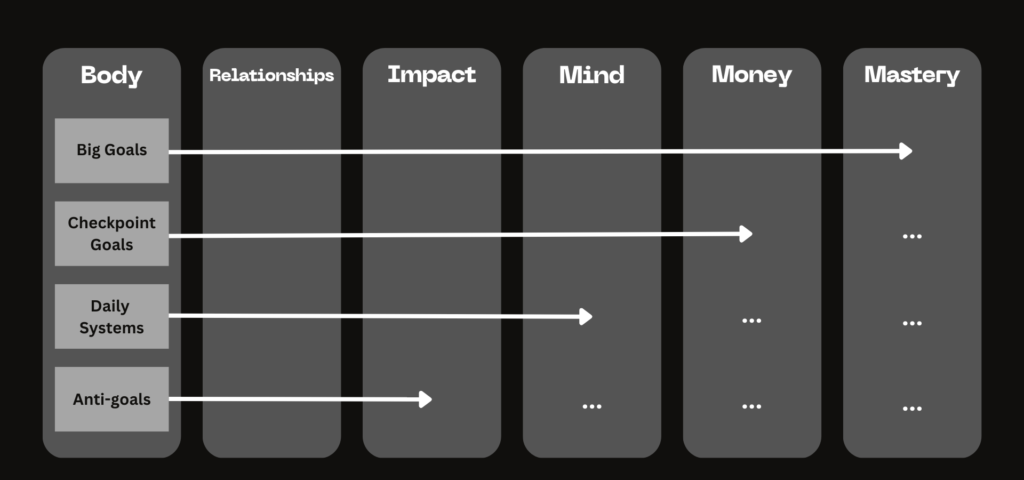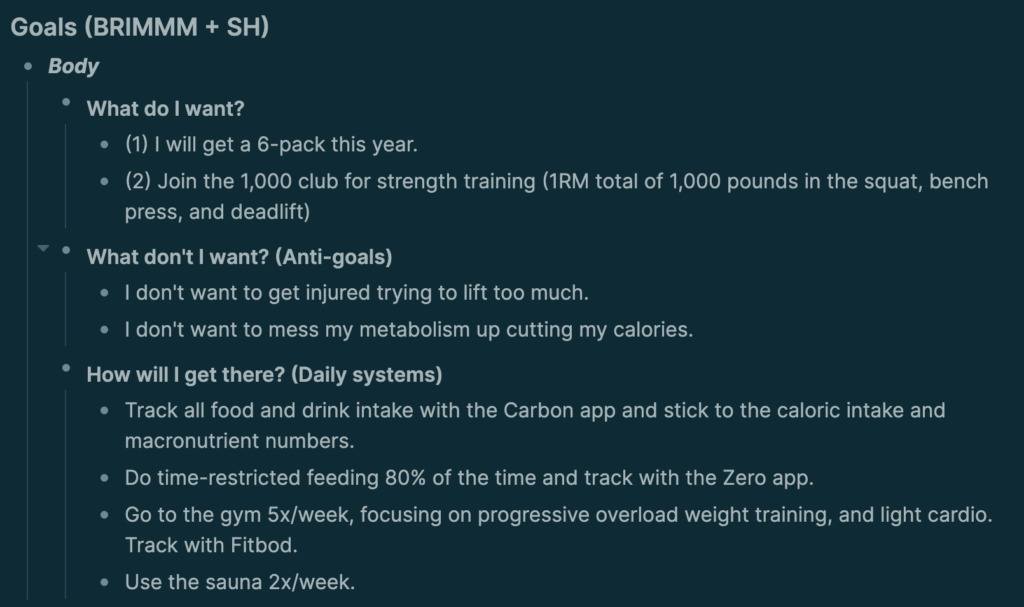I have never been a fan of New Years resolutions.
Probably because I consider myself a contrarian.
If the vast majority of the population within my sphere of perception is doing something, I categorize it as not worth doing.
Which may be something to unpack with my therapist later.
More likely, here is the reason: everyone I’ve ever seen with New Years resolutions make it a whopping 2 weeks before falling off the wagon.
And this is why: they never made their resolutions a habit or made the necessary behavior changes.
One of my favorite books is Atomic Habits by James Clear. It gave me a perspective shift.
Before, instead of goals, I focused on leveling up with new skills. After the book, I made a shift and started focusing on habits that yield new skills and perspectives.
Taking stock, evaluating my actions and results, and planning/adjusting accordingly is another new habit. And I have started doing it on an annual basis (still not a resolution though; totally different).
I call these activities an annual planning guide.
This annual planning guide is a way for me to keep track of the habits and anti-habits that I want to stick with.
These habits are made after reflecting on my principles and past year’s review.
The overarching “why” behind this process is to provide a focus. A direction. A plan of action.
“If a man knows not to which port he sails, no wind is favorable.”
Seneca
I want to focus on a direction in life that provides value and is energy-giving for me. Not energy-taking.
The habits that I choose to use are to create movement. I want to create a framework for action-based habits that support what I want out of life.
“Motivation is a natural byproduct of movement – your discipline and consistency actually create it.”
Sahil Bloom
And, these habits are going to be there when I am not motivated, but still follow the system.
When I wait to be motivated, nothing usually happens.
By using a framework of actions instead of goals, I have found that I am more likely to succeed in what I set out to achieve.
Framework
I use an unholy amalgamation of Sahil Bloom’s and Codie Sanchez‘s systems.
Codie’s BRIMMM system is an awesome way to categorize the different areas of life. BRIMM stands for body, relationships, impact, mind, money, and mastery.
Sahil’s Big Goals, Checkpoint Goals, Daily Systems, Anti-Goals framework fit nicely within the BRIMMM system and feels super comprehensive.

Breaking it down
Start with one of the BRIMM categories.
BRIMMM -> body
We’ll start with Body and I’ll walk through an example of mine.

BRIMMM -> body -> big goal
Ask yourself: “What do I want?”
A big goal for me in the body category is to get to the 1,000 pound club in weightlifting.
I’m currently at 815 pounds, so I will need to utilize progressive overload and build lean muscle to do this while decreasing body fat, which is another big goal.
BRIMMM -> body -> big goal -> checkpoint goals + anti-goals
Anti-goals are results that I don’t want. In this category, I don’t want to get injured while progressively adding more weight to my lifts.
I also want to cut calories at a sustainable rate without negatively affecting my metabolism.
You can also include intermediate goals if they fit.
BRIMMM -> body -> big goal -> checkpoint goals + anti-goals -> daily systems
This is where the rubber meets the road.
These are the daily and weekly habits that will yield results. This is where the 1% improvements everyday will come in.
For this goal, I have 4 systems:
- Count my calories and macronutrients to make sure that I am in a caloric deficit and that I am hitting my protein macro so I’m not losing any muscle mass.
- Use intermittent fasting as a way to keep my calories down. I’m a grazer, and defined feeding windows work for me.
- Hit the gym 5x/week. Track each workout with an app and make sure I’m hitting each muscle group 2x/week.
- And finally, utilize hot/cold exposure by alternating sauna and cold shower use 2x/week.
Review
That’s the system. To make sure I keep myself accountable to this system, reviews are essential.
I have time blocked out on my calendar each month to review my progress. As Tim Ferriss says, if it isn’t on the calendar it isn’t happening.
During the review, I make any necessary adjustments to the action plan or schedule based on how well I’ve stuck to it.
I’ve found that it is important to celebrate small victories along the way. I write positive statements about my progress in a journal. Find what works for you.
Conclusion
Keeping an annual plan is an excellent way to stay focused and make progress towards the life that you want for yourself.
Not only does it give you a roadmap for the year, but it also serves as a reference for those times when you feel like you’re spinning your wheels.
So give it a try and see how it works for you!

